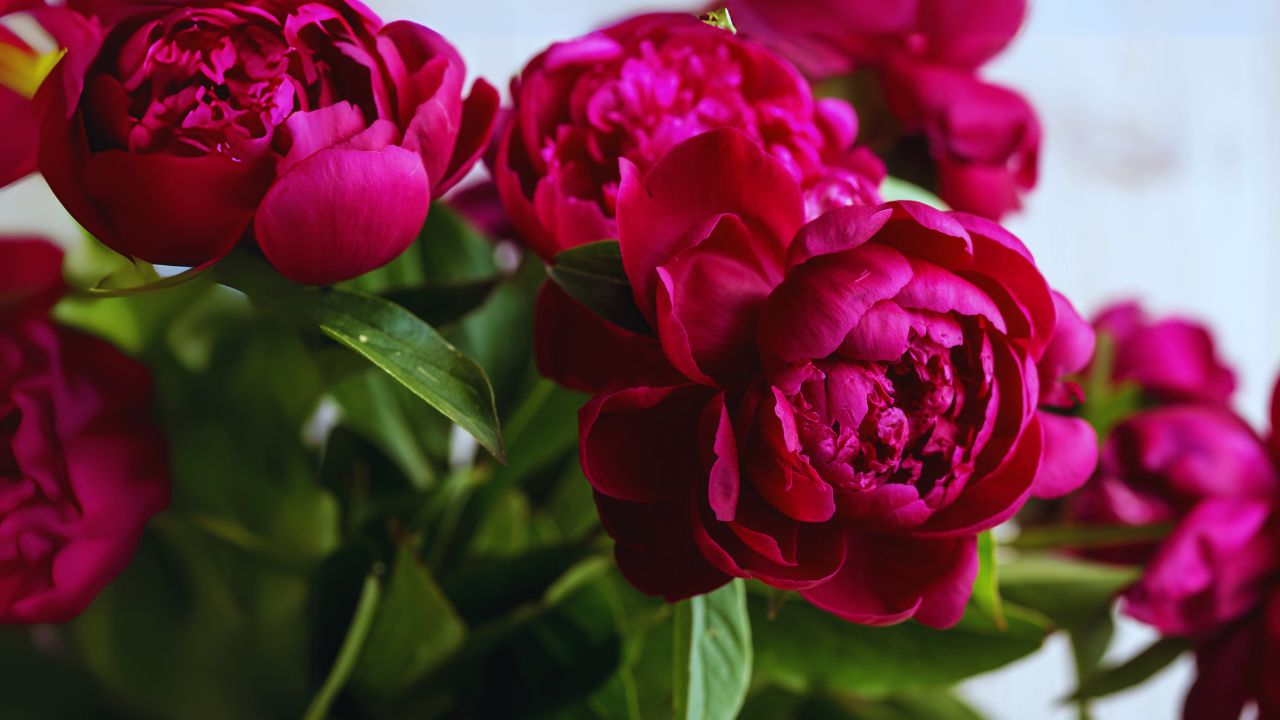Introduction to Pink Peonies Farming
Pink peonies, with their stunning, aromatic blooms, had been a fave among florists and garden enthusiasts for loads of years. These hardy perennials, well-known for their huge, easy red vegetation, add splendor to any bouquet, wedding association, or garden bed.
For farmers, crimson peonies constitute a beneficial opportunity because of their robust demand in the floral enterprise, mainly all through spring and summer time. However, information about the stability of most of the initial funding, ordinary fees, and functionality income is essential for any farmer looking to assign into pink peonies farming.
In this complete guide, we’ll cover the whole thing you want to understand about developing pink peonies as a worthwhile crop, from information stem yield to dealing with ordinary expenses. By the end of this article, you’ll have a detailed breakdown of each of the profits and costs associated with pink peonies farming.
Why Grow Pink Peonies?
Pink peonies are an undying preference. Their beauty and versatility make them a truely best flower for plenty of uses of, at the side of weddings, special activities, and retail flower stores. The enchantment of pink peonies extends beyond without a doubt their beauty—they’re additionally an incredibly profitable flower due to their long lifespan and excessive demand at some point of peak floral seasons.
One of the precept motives to broaden pink peonies is their reputation as a perennial crop. Unlike annuals, which need to be replanted each year, pink peonies will bloom every year with proper care within a few years. This long lifespan reduces replanting expenses and ensures regular returns as soon as the preliminary funding in planting is made.
Additionally, the call for pink peonies peaks in the direction of precise sports which encompass weddings, in which florists are frequently willing to pay top elegance costs for fantastic, sparkling plant life. This makes red peonies an appealing choice for farmers seeking to maximize their income from floral income.
Read also: Yucca: The Resilient Desert Beauty with Surprising Versatility
Stem Quantity: Understanding the Yield
The amount of stems a pink peonies plant can produce is one of the key factors in identifying ordinary profitability. Each peony plant takes a few years to obtain complete adulthood, however once they do, they’re capable of producing a huge wide variety of stems every year.
Factors Affecting Stem Quantity
Several elements affect the range of stems a pink peonies plant produces each season:
- Plant Age: Peonies are slow to mature but become more efficient with age. In the number one year or , yields may be low, with every plant generating just a few stems. By the 1/3 or fourth yr, a healthy, mature plant can yield between 10-15 stems. After 5 years, the ones numbers boom, with some plant life generating up to 20 stems in line with season.
- Soil and Growing Conditions: The health and productivity of your peony vegetation in big elements depend on soil exceptional and climate. Peonies thrive in fertile, nicely-draining soils and gain from barely acidic conditions. Rich, nutrient-dense soil will make sure that your flowers attain their full capability in phrases of yield.
- Care and Maintenance: Proper pruning, fertilization, and pest control are crucial for optimizing stem manufacturing. Regular care will encourage a healthful boom and maximize the variety of flowers produced with the aid of every plant.
Stem Price: Market Value and Pricing Trends
The marketplace rate of pink peonies can fluctuate relying on the time of twelve months and neighborhood name for. In commonplace, wholesale charges vary from $2 to $five consistent with stem, at the same time as retail charges can achieve as excessive as $eight to $12 in line with stem, in particular throughout the spring and early summer months. These charges can grow extensively throughout specific events like weddings or vacations, making pink peonies a valuable crop.
How to Maximize Stem Prices
- Seasonal Sales: The top season for pink peonies is for the duration of spring and early summer, whilst name for is at its highest. Planning your harvests around this time can make certain you promote your vegetation at pinnacle charge charges.
- Direct-to-Customer Sales: If you’re able to sell straight away to consumers via farmers’ markets or online flower stores, you could reduce the middleman and hold a bigger proportion of the profits. Additionally, presenting a subscription provider for clean-reduce flowers can generate steady income.
- Targeting Special Events: Weddings, company activities, and excursion celebrations are key instances whilst call for pink peonies spikes. By positioning your farm as a cross-to provider for occasion planners and florists, you may command higher charges on your product.
Initial Expenses in Pink Peonies Farming
Establishing a red peony farm requires significant upfront funding. These fees consist of land training, purchasing first-rate planting substances, and putting in crucial infrastructure together with irrigation systems.
Land Acquisition and Preparation
The cost of acquiring land for a red peony farm varies drastically depending on your location. Once you’ve secured appropriate farmland, you’ll need to prepare it for planting. This involves clearing the land, finding out and amending the soil, and putting in drainage systems if vital. Peonies require properly-draining soil to thrive, so making sure proper drainage is important to avoid waterlogging and root rot.
Planting and Peony Varieties
High-high-quality peony tubers are essential for achieving a strong yield. The charge of tubers can range from $5 to $15 in keeping with the plant, relying on the range and delivery. It’s well worth funding dependable vendors to make certain that the tubers are illness-unfastened and of great quality. Planting peonies moreover requires proper spacing, with every plant desiring about 3-four feet of space to ensure they’ve got enough room to develop without overcrowding.
Weed Prevention in Peony Farms
Weed control is an important element of peony farming, as weeds can compete with peonies for vitamins, water, and sunlight. An effective weed prevention approach will ensure that your red peonies develop unhindered and maintain their pleasantness.
Organic vs. Chemical Weed Control
- Organic Methods: Many farmers pick natural weed manipulation strategies alongside mulching, which suppresses weed boom and enables soil moisture. Hand-weeding is some different hard work-extensive but effective approach.
- Chemical Control: For big farms, chemical weed management and the usage of herbicides may be extra sensible. Pre-emergent herbicides can save you weeds from sprouting, however caution needs to be taken to ensure they don’t damage the peony plant life or the soil’s everyday health.
Land Development and Preparation
Developing the land for a peony farm involves more than just clearing the region and planting tubers. Proper education can drastically have an effect on the lengthy-term fitness and productiveness of your peony flowers.
Soil Testing and Enrichment
Before planting, it’s vital to test the soil to decide its pH and nutrient ranges. Peonies determine on a pH diploma of round 6.Zero to 7.Zero, so changes may be crucial to create maximum beneficial developing situations.
Adding herbal compost or distinctive soil amendments can improve the soil and improve its shape. Nutrient-wealthy soil is important for encouraging healthful growth and ensuring that the plants produce an abundant amount of stems.
Peony Bed Layouts and Design
A nicely-designed bed layout is vital for handling peonies effectively. Peonies should be spaced three-4 feet apart, every to prevent overcrowding and to allow correct sufficient air to circulate. Proper spacing helps reduce the hazard of fungal infections and makes it simpler to get right of entry to the plants for weeding, watering, and harvesting.
Cooler Storage for Pink Peonies
After harvesting, peonies want to be saved well to extend their shelf existence and maintain their freshness. Cooler storage is an essential funding, specially for farmers who plan to promote to florists or deliver peonies to remote markets.
Importance of Post-Harvest Cooling
Freshly reduced peonies ought to be stored in a groovy environment at temperatures between 33-36°F (1-2°C). Cooling the flowers right away after harvesting slows down their bloom cycle and preserves their terrific. This is especially essential in case you plan to move the plant life over long distances or store them for numerous days in advance rather than selling them. Investing in an extremely good cooling device is vital to preserve your product clean and marketplace-ready.
Irrigation Systems and Costs
Water management is a crucial component within the success of a pink peonies farm. Peonies need normal moisture, in particular inside the direction of the developing season, to thrive and produce wholesome stems.
Watering Needs of Pink Peonies
Installing an inexperienced irrigation gadget, which includes drip irrigation, guarantees that your plants get preserved from a regular delivery of water without the threat of overwatering. Drip irrigation structures deliver water at once to the roots, minimizing waste and lowering the hazard of ailments because of extra moisture at the foliage.
Though putting in a drip irrigation machine may additionally moreover require an preliminary investment, it could repay in the long run with the aid of the use of enhancing plant health and reducing water utilization.
Transportation of Pink Peonies to Markets
Once your peonies are harvested and properly saved, the following project is getting them to the marketplace. Ensuring that your flora reap customers in a splendid scenario is essential to retaining a terrific recognition and securing repeat clients.
Distribution Channels
- Local Markets: Selling at farmers’ markets or at once to florists is an incredible way to construct relationships with neighborhood consumers and set up a dependable client base.
- Shipping and Online Sales: With the upward push of e-alternate, many farmers now sell their flowers online. Shipping glowing plant life calls for cautious packaging and efficient logistics, however it opens up your market to a much wider audience.
Recurring Expenses: What to Expect
While pink peonies farming may be incredibly worthwhile, ongoing charges which include upkeep, exertions, and inputs ought to be factored into your prolonged-time period rate variety.
Yearly Maintenance and Inputs
Each year, peony plants need care inside the shape of pruning, fertilizing, and pest management. Organic farmers also can use compost and organic fertilizers, at the same time as others pick chemical fertilizers to ensure healthful plant increase. Regular weeding, irrigation, and tool maintenance also are crucial routine costs.
Labor Costs
Labor is one among the most important ongoing fees for peony farmers, especially in the course of planting and harvesting seasons. Depending on the dimensions of your farm, you could need to hire workers to assist with weeding, harvesting, and keeping the flora. Managing difficult work charges successfully is prime to keeping profitability.
Conclusion
Growing pink peonies offers farmers a completely precise possibility to tap right into a beneficial market. While the initial setup costs can be significant, the perennial nature of peonies and their high call for lead them to a profitable lengthy-time period investment.
By cautiously managing habitual prices, optimizing yield, and concentrating on pinnacle market seasons, red peony farming may be each a worthwhile and profitable undertaking.



